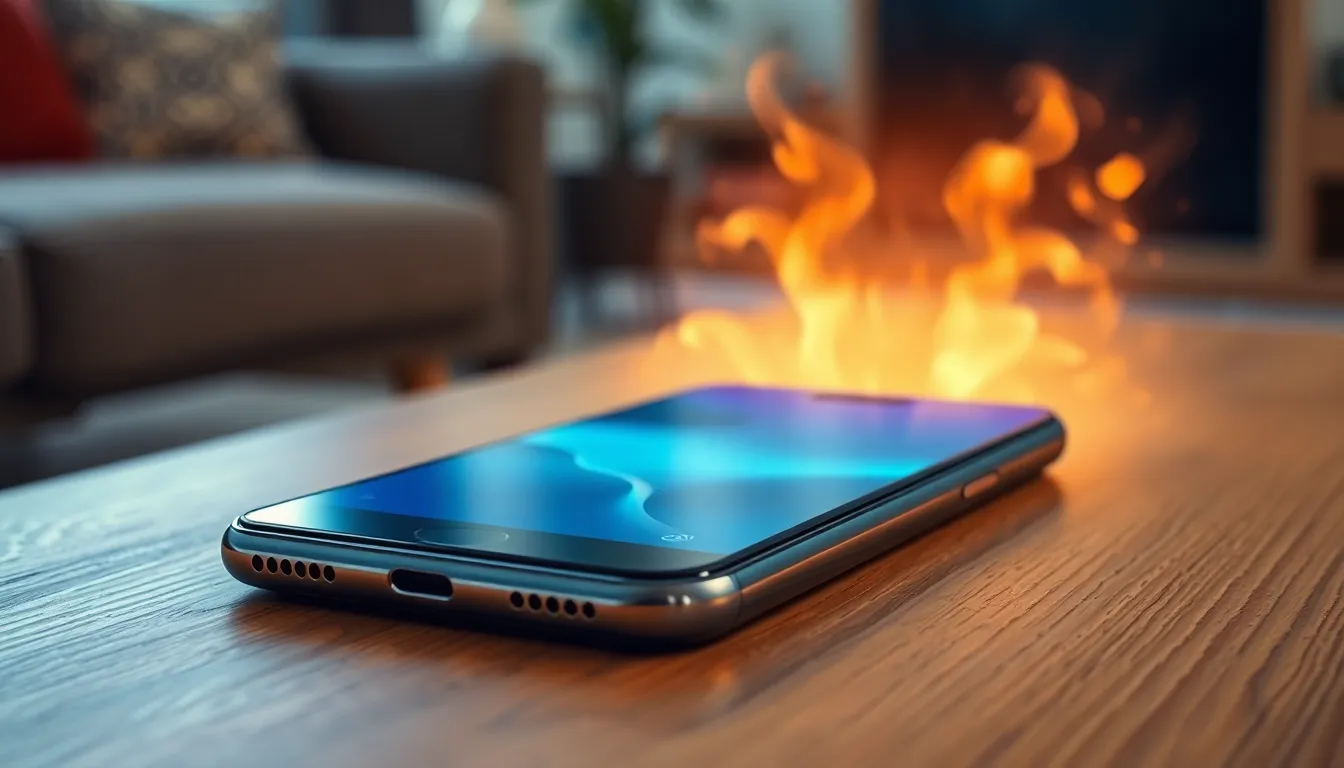Table of Contents
ToggleIs your iPhone feeling more like a hot potato than a sleek gadget? You’re not alone. Many users find themselves baffled when their beloved devices start to resemble mini space heaters. Whether it’s during a marathon gaming session or while binge-watching the latest series, an overheating iPhone can turn a relaxing experience into a sweaty ordeal.
But fear not! Understanding why your phone runs hotter than a summer day can save you from potential headaches and costly repairs. From pesky apps hogging resources to environmental factors, there are plenty of reasons your device might be cranking up the heat. Let’s dive into the common culprits and discover how to keep your iPhone cool and collected.
Common Causes of Overheating
Several factors contribute to iPhone overheating. Understanding these reasons helps users address the issue efficiently.
Background Apps and Processes
Running multiple background apps strains system resources. Applications that constantly refresh or use location services consume battery and CPU power. Background processes can lead to increased temperatures, especially if the device is under heavy usage. Users often overlook the impact of open apps. Closing unused applications may reduce overheating issues.
High-Performance Tasks
High-performance tasks create significant heat. Gaming, video editing, and augmented reality applications require a lot of processing power. Extended use of these demanding tasks often pushes the device’s limits. Users may notice that their phones become warmer during sessions of high activity. Taking breaks during intense usage helps cool the device.
Environmental Factors
Environmental conditions play a crucial role in phone temperatures. Exposing an iPhone to direct sunlight or high ambient temperatures raises the risk of overheating. Humidity can also exacerbate temperature issues. Keeping devices in cool, shaded areas minimizes the chances of overheating. Users should be mindful of where they use their phones to safeguard performance.
Signs of Overheating

Recognizing the signs of an overheating iPhone is crucial for maintaining optimal device performance. Several physical indicators and performance issues can signal overheating.
Physical Indicators
A user may notice several physical indicators when an iPhone overheats. Elevated temperatures often cause the device to feel unusually warm to the touch. Additionally, noticeable discomfort can arise when holding the phone. Screen dimming represents another common sign, as devices may automatically lower brightness to manage heat. Battery life can shorten abruptly, often indicating that the phone struggles to maintain its charge. Lastly, any unexpected shutdowns suggest significant overheating.
Performance Issues
Performance issues frequently accompany an overheating iPhone. Apps may crash unexpectedly or lag during use, disrupting the user’s experience. Battery drain accelerates significantly, leading to rapid depletion even with minimal usage. Notifications about temperatures appear, often warning that the iPhone requires cooling down to function properly. Another common issue involves the inability to charge, as overheating can prevent normal charging processes. Lastly, the device may experience unresponsiveness, hindering user actions.
Troubleshooting Steps
Taking action when an iPhone overheats can prevent further issues. These troubleshooting steps focus on practical solutions to help maintain optimal performance.
Restarting Your Device
Restarting the device often resolves temporary glitches. Users can press and hold the side button and either volume button until the power off slider appears. Slide it to turn off the phone completely. After a few moments, turning it back on can refresh the system and close any resource-draining processes. A simple restart often clears unnecessary background tasks, leading to better temperature management.
Updating Software
Keeping software current is vital for device efficiency. Apple regularly releases updates with performance improvements and bug fixes. Check for updates by navigating to Settings, tapping General, and selecting Software Update. If an update is available, downloading and installing it can optimize the system and address overheating issues. Staying up-to-date ensures that the device runs smoothly without unnecessary strain.
Managing App Usage
Managing app usage directly impacts device temperature. Apps that use heavy resources, like gaming or streaming, should be monitored closely. Users can close unused applications by swiping up from the bottom of the screen and pausing on the app preview, then swiping up or off the screen to close it. Limiting intense tasks during hot weather prevents overheating and helps maintain performance. Regularly checking battery usage can identify which apps cause excessive heat and should be used sparingly.
Preventive Measures
Users can take several steps to prevent their iPhones from overheating. Implementing effective strategies can significantly enhance device performance and longevity.
Optimizing Settings
Adjusting certain settings helps manage heat generation. Reducing screen brightness minimizes energy use and lessens heat buildup. Enabling Low Power Mode conserves battery life by limiting background activities. Turning off location services for apps that don’t require constant tracking further reduces strain. Disabling notifications from background apps also prevents unnecessary processing. Keeping the phone software updated ensures access to the latest optimizations and fixes. Monitoring the performance of running apps aids in identifying those that may contribute to overheating.
Using Protective Cases Wisely
Not all cases suit every situation, especially when considering overheating risks. Choosing cases with good ventilation can help dissipate heat more effectively. Avoiding thick, bulky designs allows for better airflow around the device. Users should remove the case during intensive tasks, such as gaming or video streaming, to allow for adequate heat dissipation. Regularly cleaning cases to prevent dust accumulation can help maintain optimal cooling. Storing the phone in shaded areas when not in use also contributes to keeping the device cool. By opting for well-designed protective cases, users can blend safety with functionality.
Overheating iPhones can be a frustrating experience but understanding the causes and implementing preventive measures can make a significant difference. By recognizing the signs of overheating and adjusting usage habits, users can keep their devices cooler and functioning optimally.
Taking simple steps like closing background apps and managing performance-intensive tasks can help mitigate heat generation. Additionally, being mindful of environmental conditions and using protective cases wisely can further enhance device longevity.
With these strategies in place, users can enjoy their iPhones without the worry of overheating issues.







